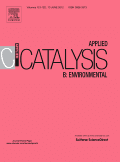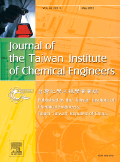
OZONE-SCIENCE & ENGINEERING
Scope & Guideline
Pioneering Insights in Ozone Science and Environmental Engineering
Introduction
Aims and Scopes
- Environmental Applications:
Research exploring the use of ozone in environmental remediation, including wastewater treatment, air purification, and the degradation of pollutants. - Food Safety and Preservation:
Studies focusing on the application of ozone in food processing, preservation, and safety, including its effects on microbial control and food quality. - Health and Medical Applications:
Investigations into the therapeutic uses of ozone, including its antimicrobial properties and applications in medical treatments. - Chemical Processes and Catalysis:
Research on the chemical reactions involving ozone, including catalytic processes for organic compound degradation and the development of ozonation methods. - Agricultural Innovations:
Explorations of ozone's role in agriculture, particularly in seed treatment, pest control, and enhancing crop quality. - Ozone Generation and Technology Development:
Innovations in ozone generation methods, including novel technologies and reactor designs for improved efficiency and effectiveness.
Trending and Emerging
- Ozone in Public Health and Safety:
An increase in studies examining the efficacy of ozone against pathogens, particularly in light of recent global health challenges, highlights its potential in disinfection and sanitation. - Advanced Oxidation Processes (AOPs):
Research focusing on the integration of ozone with other oxidation agents, such as hydrogen peroxide and UV light, is gaining traction as a method for degrading complex pollutants. - Sustainable Agriculture Practices:
Emerging research on the use of ozone for enhancing agricultural productivity and sustainability, including seed treatment and pest management, reflects a growing interest in eco-friendly practices. - Nanotechnology and Ozone:
The application of nanomaterials in conjunction with ozonation processes is trending, showcasing innovations in catalyst development for improved degradation efficiency. - Ozone in Climate Change Mitigation:
Exploratory studies on how ozone technology can contribute to climate change solutions, particularly in reducing greenhouse gas emissions and improving air quality.
Declining or Waning
- Traditional Pest Control Methods:
Research on conventional pest control using ozone is less frequent as newer, more integrated pest management strategies gain attention, emphasizing sustainability. - Basic Ozone Chemistry:
Papers focusing solely on the theoretical aspects of ozone chemistry without practical applications are becoming less common, as researchers seek to connect theory with real-world applications. - Static Ozone Applications:
Studies on static or non-innovative uses of ozone in industrial processes are declining, with a shift towards dynamic and advanced oxidation processes that maximize efficiency. - General Ozonation Studies:
General studies on ozonation processes without a specific focus on novel applications or improvements are less frequent, as the journal emphasizes innovative research.
Similar Journals

Applied Catalysis B-Environment and Energy
Driving innovation at the intersection of catalysis and environmental science.Applied Catalysis B-Environment and Energy, published by Elsevier, is a leading journal in the fields of catalysis, environmental science, and process chemistry, with an impressive impact factor that reflects its significance in advancing research and innovation. Established in 1992, this esteemed journal has earned a prestigious status as evidenced by its 2023 category quartiles—ranking in the Q1 category for Catalysis, Environmental Science, and Process Chemistry and Technology. With consistently high rankings in the Scopus database, it holds a remarkable position as #1 in General Environmental Science and #2 in both Process Chemistry and Catalysis, showcasing its profound impact on the respective fields. The journal’s scope encompasses both theoretical and practical research, targeting the pivotal developments in catalysis that promote sustainable practices and energy efficiency. Researchers, professionals, and students alike will find invaluable insights and cutting-edge studies published within its pages, making it an essential resource for those invested in pioneering advancements for a greener, more energy-efficient future.

International Journal of Chemical Engineering
Fostering breakthroughs in chemical engineering methodologies.International Journal of Chemical Engineering is a leading peer-reviewed journal published by HINDAWI LTD, dedicated to advancing the field of chemical engineering through innovative research and practical applications. With an impact factor that places it in the Q2 category of Chemical Engineering (miscellaneous), this journal has established itself as a significant resource for researchers and professionals alike, particularly those interested in general chemical engineering topics. Since its transition to Open Access in 2008, the journal has ensured that critical scientific knowledge remains accessible to a global audience, fostering collaboration and interdisciplinary research. With coverage from 2009 to 2024, it continues to be an essential platform for disseminating cutting-edge findings, methodologies, and discussions that shape the future of chemical engineering. For more information, visit their website or access the latest issue directly to explore groundbreaking studies and insights.

Pesquisa Agropecuaria Tropical
Connecting research and practice for food security.pesquisa Agropecuaria Tropical is a premier Open Access journal dedicated to advancing the knowledge and practices within the field of agronomy and crop science. Since its inception in 1971, this peer-reviewed journal, published by the Universidade Federal de Goiás, has played a pivotal role in disseminating high-quality research from Brazil and beyond. Operating under an Open Access model, it ensures that scholarly articles are freely accessible, thereby fostering greater collaboration and innovation. With a Scopus ranking placing it in the 32nd percentile among its peers in agricultural and biological sciences, and a current classification in the Q3 category of agronomy and crop science, the journal serves as an essential resource for researchers, professionals, and students alike. As it continues its publication journey from 2010 to 2024, it remains committed to contributing valuable insights and advancements in the agricultural sector, ultimately influencing sustainable practices and food security.

Izvestiya Vuzov-Prikladnaya Khimiya i Biotekhnologiya
Transforming Ideas into Practical ApplicationsIzvestiya Vuzov-Prikladnaya Khimiya i Biotekhnologiya, published by Irkutsk National Research Technical University, is a prominent open-access journal dedicated to advancing the fields of applied chemistry and biotechnology. Since its inception in 2011, this journal has provided a platform for the dissemination of significant research findings, innovative techniques, and technological advancements that bridge the gap between theoretical frameworks and practical applications. The journal is indexed in various databases, ensuring that published works reach a global audience of researchers, professionals, and students eager to explore the latest developments in these critical disciplines. With its commitment to open-access publishing, Izvestiya Vuzov-Prikladnaya Khimiya i Biotekhnologiya plays a vital role in fostering collaboration and knowledge sharing within the scientific community, thus contributing to the advancement of both fields in a rapidly evolving technological landscape.

FOOD AND BIOPRODUCTS PROCESSING
Exploring breakthroughs in food and bioproduct processing.FOOD AND BIOPRODUCTS PROCESSING, published by Elsevier, is a leading journal dedicated to advancing the fields of biochemistry, biotechnology, chemical engineering, and food science. With a strong impact factor and robust rankings—Q2 in Biochemistry and Biotechnology, and Q1 in Food Science—it serves as an essential resource for researchers, industry professionals, and students alike. The journal focuses on innovative research and practical applications in the processing of food and bioproducts, spanning from raw material transformation to product development. By fostering the exchange of knowledge and ideas, FOOD AND BIOPRODUCTS PROCESSING aims to enhance food quality and sustainability while addressing global challenges in food security and environmental impact. With an accessible format and a diverse pool of contributors, this publication stands as a vital platform for groundbreaking studies, making significant contributions to the advancement of technology and practices in food processing and production.

Journal of the Taiwan Institute of Chemical Engineers
Elevating knowledge exchange in the chemical sciences.The Journal of the Taiwan Institute of Chemical Engineers is a prestigious publication in the field of chemical engineering and chemistry, published by Elsevier. With an impressive impact factor placing it in the top quartiles (Q1) of both the Chemical Engineering (miscellaneous) and Chemistry (miscellaneous) categories, this journal serves as a vital platform for disseminating cutting-edge research and innovative findings. Since its inception in 2009 and continuing through 2024, it has established a strong reputation with notable Scopus rankings—ranked 40th out of 273 in General Chemical Engineering and 62nd out of 408 in General Chemistry, reflecting the journal’s significance in its field. By offering open access options, the journal ensures that research is readily available to a global audience, fostering collaboration and knowledge exchange among researchers, professionals, and students. The Journal of the Taiwan Institute of Chemical Engineers is dedicated to advancing the discipline of chemical engineering and supporting the development of novel scientific methodologies and applications.

PLASMA CHEMISTRY AND PLASMA PROCESSING
Connecting Researchers to the Pulse of Plasma TechnologyPLASMA CHEMISTRY AND PLASMA PROCESSING, published by SPRINGER, is a premier journal dedicated to advancing the field of plasma chemistry and its applications in processing technologies. Established in 1981, this journal has attained a strong impact in its field, reflecting its Q2 rankings in several categories including Chemical Engineering, Chemistry, and Condensed Matter Physics. It serves as a crucial platform for researchers, professionals, and students aiming to explore innovative plasma-based techniques and solutions for diverse applications, including materials synthesis and surface engineering. Through rigorous peer-reviewed articles and comprehensive studies, this journal underscores the significance of plasma processes in contemporary scientific and industrial landscapes, fostering knowledge exchange and emerging trends up to the year 2024. With its strategic focus on cutting-edge research, PLASMA CHEMISTRY AND PLASMA PROCESSING remains an essential resource for those committed to the enhancement and evolution of plasma technologies.

Biotecnia
Empowering scholars to shape the future of biotechnology.Biotecnia is a premier journal published by UNIV SONORA, dedicated to advancing the field of biotechnology through the dissemination of high-quality research and innovative findings. With its ISSN 1665-1456, this journal provides a vital platform for researchers, professionals, and students to share scholarly work that encompasses a diverse range of topics, including molecular biology, genetic engineering, and bioprocessing. Despite being based in Hermosillo, Mexico, Biotecnia’s reach extends globally, aiming to foster collaboration and knowledge exchange among the international scientific community. The absence of an open-access option enhances the journal's exclusivity while ensuring rigorous peer review, thus maintaining high academic standards. As biotechnology continues to play a pivotal role in resolving global challenges, Biotecnia stands as an essential resource for those committed to innovation and research excellence in this evolving discipline.

Journal of Chemistry and Technologies
Connecting Ideas, Transforming Technologies.The Journal of Chemistry and Technologies, published by OLES HONCHAR DNIPROPETROVSK NATIONAL UNIVERSITY, is an open access journal dedicated to advancing knowledge in the broad fields of chemistry and chemical engineering since its inception in 2013. With ISSN 2663-2934 and E-ISSN 2663-2942, this journal provides a vital platform for researchers and professionals, particularly in Ukraine and beyond, to share innovative research findings and contemporary technological advancements. Currently ranked in the Q4 quartile in both Chemical Engineering and General Chemistry for 2023, it serves as an enriching resource for those interested in emerging trends and interdisciplinary studies within these domains. The journal adheres to high academic standards while fostering collaboration in the scientific community by offering open access articles that ensure visibility and accessibility to a global audience. As an important part of the academic landscape, the Journal of Chemistry and Technologies aims to inspire future research and development, paving the way for new discoveries and applications in chemistry-related fields.

Journal of Environmental Health Science and Engineering
Connecting academia and practice in environmental health science.Journal of Environmental Health Science and Engineering, published by Springer, stands at the forefront of scholarly research in environmental health and engineering. With an impressive E-ISSN of 2052-336X and a significant impact factor reflected in its Q2 quartile rankings across various essential categories—including Applied Microbiology, Environmental Engineering, and Public Health—the journal serves as a vital platform for disseminating high-quality research from 2012 to 2024. Its rankings in fields such as Environmental Science and Waste Management position it as a distinguished resource for professionals and academics aiming to advance their understanding of contemporary environmental challenges. As an open-access journal based in Switzerland, it champions accessibility and collaboration, allowing researchers to share insights that influence policy and practical applications in environmental health. The journal's commitment to fostering innovative research makes it indispensable for those dedicated to enhancing the intersection of environmental science and public health.